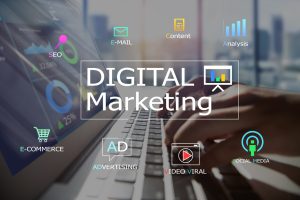Digital Marketing Strategies Tools and Best Practices
In today’s digital age, businesses need to have a strong online presence to reach and engage with their target audience. Digital marketing is a powerful way to achieve this, offering a range of strategies, tools, and techniques to promote products, services, and brands online.
What is Digital Marketing?
It encompasses all marketing efforts that use electronic devices or the internet. It involves using digital channels such as search engines, social media, email, and websites to connect with customers and promote businesses.
Types of Digital Marketing:
1. Search Engine Optimization (SEO): Optimizing website content to rank higher in search engine results pages (SERPs).
2. Pay-Per-Click (PPC) Advertising: Creating and publishing online ads that are paid for each time a user clicks.
3. Social Media Marketing: Using social media platforms to promote products, services, and brands.
4. Content Marketing: Creating and distributing valuable, relevant, and consistent content to attract and retain a clearly defined audience.
5. Email Marketing: Sending targeted and personalized messages to customers and potential customers via email.
6. Influencer Marketing: Partnering with influencers to promote products, services, or brands to their followers.
7. Affiliate Marketing: Partnering with affiliates who promote products, services, or brands in exchange for commissions.
Digital Marketing Tools:
1. Google Analytics: A web analytics tool to track website traffic, engagement, and conversion rates.
2. SEMrush: An all-in-one digital marketing tool for SEO, PPC, and content marketing.
3. Hootsuite: A social media management tool to schedule and publish content.
4. Mailchimp: An email marketing tool to create and send targeted campaigns.
5. Canva: A graphic design tool to create visual content.
Best Practices:
1. Know Your Audience: Understand your target audience’s needs, preferences, and behaviors.
2. Set Clear Goals: Define measurable goals and objectives for your digital marketing efforts.
3. Create High-Quality Content: Develop valuable, relevant, and consistent content.
4. Optimize for Mobile: Ensure a smooth user experience across devices.
5. Measure and Analyze: Track performance using this tools and analytics.
Conclusion:
This is a powerful way to reach and engage with your target audience. By understanding the types of this using the right tools, and following best practices, you can develop a successful digital marketing strategy that drives results for your business.
I hope this comprehensive guide to digital marketing helps! Let me know if you have any questions or need further clarification on any of the topics.
Short URL: https://seoonlineclass.com/dmtseoclass-37/?p=14


